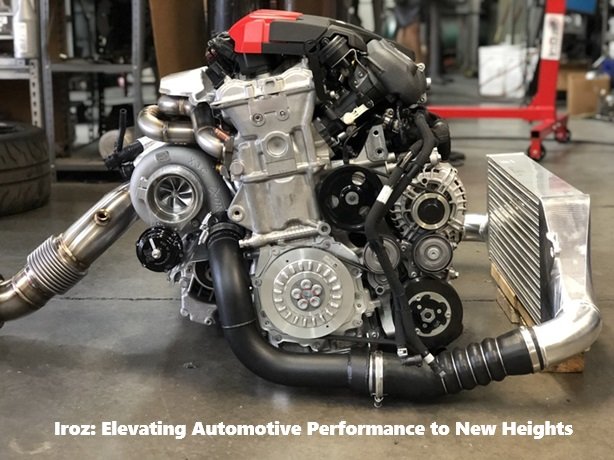How to Prepare Your Car for a Long Road Trip? A long road trip can be an exciting adventure, offering you the freedom to explore new places at your own pace. However, to ensure a smooth journey, it’s crucial to prepare your car properly. A well-prepared car not only enhances your safety but also reduces the chances of breakdowns and inconveniences during your trip. In this comprehensive guide, we will cover everything you need to do to get How to Prepare Your Car for a Long Road Trip, from essential maintenance checks to packing the right tools and supplies.
1. Check Your Car’s Fluids
Fluids are the lifeblood of your car, and keeping them at the right levels is essential for its performance and longevity.
- Engine Oil: Check the oil level using the dipstick, and make sure it’s within the recommended range. If it’s dirty or nearing the time for an oil change, have it replaced? Consider using synthetic oil, which generally lasts longer and performs better in varying temperatures.
- Coolant: The coolant keeps your engine from overheating. Check the coolant level in the reservoir and top it up if necessary. Inspect the hoses and radiator for leaks or cracks.
- Brake Fluid: Ensure the brake fluid is at the proper level and hasn’t darkened, which could indicate the need for replacement. A well-maintained braking system is critical for your safety.
- Transmission Fluid: For automatic transmissions, check the fluid level and condition. It should be at the correct level and have a reddish color. Low or dirty transmission fluid can lead to transmission problems.
- Windshield Washer Fluid: Keep your windshield washer fluid reservoir full and check that the wiper blades are in good condition. You never know when you might encounter a sudden downpour or dusty conditions that will require a clean windshield.
- Power Steering Fluid: If your car uses hydraulic power steering, check the fluid level to ensure smooth steering during your trip.
2. Inspect Tires and Alignment
Your tires are your car’s contact points with the road, so their condition is vital for both safety and fuel efficiency.
- Tire Pressure: Check the tire pressure, including the spare tire. Underinflated tires can reduce fuel efficiency, while overinflated tires can lead to a blowout. Use a reliable tire pressure gauge and inflate them to the manufacturer’s recommended levels.
- Tire Tread: Inspect the tread depth of your tires. Bald or unevenly worn tires can compromise traction and safety, especially in wet or slippery conditions. The “penny test” is a simple way to check tread depth: insert a penny into the tread with Lincoln’s head facing down. If you can see the top of Lincoln’s head, it’s time to replace the tire.
- Wheel Alignment and Balance: If your car pulls to one side or you notice uneven tire wear, it might be time for a wheel alignment. Proper alignment helps your car drive straight, improves fuel efficiency, and prolongs tire life.
- Check for Damage: Look for any visible damage, such as cuts, punctures, or bulges in the tires, and replace any damaged tires immediately.
3. Test the Battery
A dead battery can quickly derail your road trip plans. Make sure your battery is in good condition before hitting the road.
- Check Battery Terminals: Inspect the battery terminals for corrosion (white, powdery deposits) and clean them with a battery terminal cleaner or a mixture of baking soda and water. Ensure the cables are securely connected.
- Test Battery Voltage: Use a multimeter to check the battery voltage. A fully charged battery should read around 12.6 volts. If it’s lower, consider having it tested by a professional or replacing it if necessary.
- Battery Age: If your battery is over three years old, consider replacing it, especially if you’ll be traveling in extreme temperatures. Batteries tend to lose their efficiency over time and can fail without warning.
4. Examine the Braking System
Your brakes are the most critical safety feature of your car, so they must be in top condition.
- Brake Pads and Rotors: Check the thickness of the brake pads. If they are less than 1/4 inch thick, it’s time to replace them. Listen for any squeaking or grinding noises when braking, as these can indicate worn pads or rotors.
- Brake Fluid Level: Ensure that the brake fluid is at the proper level. If it is low, it could indicate a leak in the braking system, which should be inspected immediately.
- Brake Performance: Test your brakes in a safe area to ensure they provide responsive stopping power. If your brakes feel spongy or unresponsive, have them checked by a mechanic.
5. Check Lights and Electrical Systems
Proper lighting and functioning electrical systems are essential for visibility and communication on the road.
- Headlights and Taillights: Make sure your headlights, taillights, brake lights, and turn signals are all functioning correctly. Replace any burnt-out bulbs and clean the lenses to ensure maximum brightness.
- Interior Lights: Check interior lights and dashboard indicators. A malfunctioning dashboard light could indicate a problem with the car’s electrical system.
- Fuses and Wiring: Inspect the fuse box for blown fuses and check for any loose or damaged wiring that could cause electrical issues during your trip.
6. Inspect Suspension and Steering Components
A well-maintained suspension system ensures a smooth and comfortable ride.
- Shock Absorbers and Struts: Check for leaks, cracks, or damage to the shock absorbers and struts. If your car bounces excessively after hitting a bump or feels unstable in corners, it might be time to replace these components.
- Steering Mechanism: Test the steering by turning the wheel fully in both directions. Listen for any unusual noises, like squeaks or clunks, which could indicate a problem.
7. Test Air Conditioning and Heating Systems
Depending on the climate you’ll be traveling through, a functioning air conditioning and heating system is essential for comfort.
- Air Conditioning: Ensure that the air conditioning system blows cold air. If it doesn’t, you might need a refrigerant recharge or have the system checked for leaks.
- Heating System: Test the heating system to ensure it provides adequate warmth. Check the defrosters as well, as they are crucial for maintaining clear visibility in cold or rainy conditions.
8. Prepare an Emergency Kit
An emergency kit can be a lifesaver if you run into trouble on the road.
- Basic Tools: Include a set of basic tools, such as a wrench, screwdriver, pliers, and tire jack.
- First Aid Kit: A well-stocked first aid kit is essential for treating minor injuries. Include bandages, antiseptic wipes, pain relievers, and any personal medications.
- Flashlight and Batteries: A flashlight is crucial for emergencies at night. Make sure it has fresh batteries or is rechargeable.
- Jumper Cables: These are essential for jump-starting your car in case of a dead battery.
- Reflective Warning Triangles or Flares: These can be used to alert other drivers if your car breaks down on the side of the road.
- Blanket and Extra Clothes: In case of an unexpected breakdown in cold weather, a blanket and extra clothes can help keep you warm.
- Water and Non-Perishable Snacks: Carry enough water and snacks to last for a day in case you are stranded.
- Portable Phone Charger: A portable charger can keep your phone powered for emergency calls.
9. Ensure Proper Documentation
Make sure all necessary documents are up-to-date and easily accessible.
- Driver’s License: Verify that your driver’s license is current and keep it in your wallet or purse.
- Car Registration: Ensure your car’s registration is valid and kept in the glove compartment.
- Insurance Information: Carry your car insurance documents and be aware of what your policy covers, especially if you’ll be driving across state or national borders.
- Emergency Contact Information: Keep a list of emergency contacts, including roadside assistance numbers and family members. How to Prepare Your Car for a Long Road Trip.
10. Plan Your Route and Stay Updated
Having a well-thought-out plan can prevent unnecessary stress and delays.
- Map Out Your Route: Use a reliable GPS device or app to map out your route, and download offline maps in case of poor signal areas.
- Check Traffic and Weather Conditions: Stay updated on traffic conditions and weather forecasts for your route. Adjust your plans accordingly to avoid bad weather or traffic jams.
- Identify Rest Stops and Gas Stations: Plan regular breaks to rest and refuel. Knowing the location of rest stops and gas stations helps you avoid running low on fuel in remote areas.
11. Perform a Pre-Trip Test Drive
Before embarking on a long journey, take your car for a test drive to check for any abnormalities.
- Listen for Unusual Noises: Pay attention to any strange noises, such as rattles, squeaks, or clunks, which could indicate underlying issues.
- Monitor Car Performance: Observe the car’s handling, braking, and overall performance to ensure everything is in order.
- Check Fuel Efficiency: Note the fuel efficiency; a sudden drop could indicate a problem with the engine or tires.
12. Pack Smartly
Packing smartly can make your trip more comfortable and organized.
- Distribute Weight Evenly: Distribute the weight of your luggage evenly to avoid putting too much strain on one side of the car. This helps in maintaining vehicle balance and handling.
- Keep Essentials Accessible: Keep essential items, such as snacks, water, maps, and your emergency kit, easily accessible.
- Avoid Overloading: Check your vehicle’s maximum load capacity, and avoid overloading, which can affect handling, fuel efficiency, and braking.
13. Consider Roadside Assistance
Having a roadside assistance plan can provide peace of mind in case of an unexpected breakdown.
- Review Your Coverage: Check what services are covered under your roadside assistance plan, such as towing, flat tire change, lockout service, and fuel delivery.
- Keep Contact Information Handy: Store the contact number for roadside assistance in your phone and have a physical copy in your car.
Conclusion
How to Prepare Your Car for a Long Road Trip Preparing your car for a long road trip involves thorough checks and smart planning to ensure a safe and enjoyable journey. From inspecting essential car components like fluids, tires, brakes, and batteries to packing an emergency kit and planning your route, every step contributes to a smoother experience. By taking the time to properly prepare, you can avoid potential issues, stay safe, and make the most of your road trip adventure. How to Prepare Your Car for a Long Road Trip. Safe travels!




